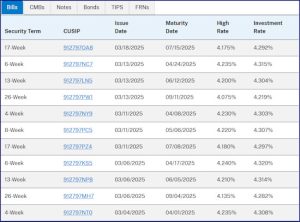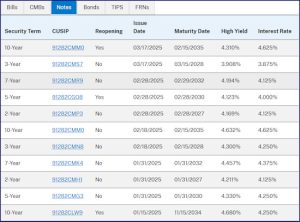Posted on Friday, 28th March 2025 by Dennis Damp
 Print This Post
Print This Post
Despite the overall uncertainty in the federal sector now, many in the national security workforce have, for the most part, been exempt from significant disruptions. With few exceptions, most organizations, including those working in national security, will be included as Agency RIF and Reorganization Plans (ARRPs) progress.
Holding on to What You Got
Federal employees who hold an active security clearance retain their credentials for up to two years after leaving their position. You can transition to another job that requires a clearance, whether within or outside government, provided you stay compliant and no violations are noted on your record.
Staying up-to-date with new developments in your field and refining your skills in emerging areas, such as AI, can enhance your chances of securing a related and high-paying position.
Security Clearance Defined
A security clearance is a determination by the United States government as to whether a person or company is eligible to access classified information. There are two types of clearances:
- Personnel Security Clearances (PCLs) and
- Facility Security Clearances (FCLs).
Most agencies have three levels of security clearances: Confidential, Secret, and Top Secret.
Security clearance determinations can be made relatively quickly, depending on the circumstances and the level of clearance applied for. It can take anywhere from a year to more, depending on the specific circumstances.
There are three phases to the process:
- Application,
- Investigation, and
- Adjudication
Typically, clearance delays are attributed to the investigation phase or are caused by an application that is not properly completed.
Six One Way, Half Dozen the Other
A Security clearance remains with you for at least two years after leaving a position, providing time to explore other clearance opportunities within and outside the government. Often, during major reorganizations, the baby is thrown out with the bath water! In other words, government agencies overreact and must hire back positions that should have never been vacated. This also occurs in the private sector, and for those who stay attuned to their fields and don’t burn bridges behind them, many opportunities may emerge.
Opportunities Rise from the Ashes
This doesn’t only apply to security positions; it applies to everyone who was shown or will be shown the door as the ARRFs come to fruition. Many federal workers in major metropolitan areas, particularly in the DC area, may receive PSC orders to relocate to field facilities nationwide. Many are unwilling to do so, even when offered attractive relocation incentives.
It’s a fact of life that I experienced during my 35-year career. During the reorganizations in the late 1990s, I was amazed at how many employees working in the DC and New York areas refused to relocate and quit rather than move across the country.
This creates job opportunities at those locations or for returning federal employees who were recently let go!
Government Spending Cuts, RIFs, and Early Retirements Fast Tracked – Why and When?
Summary
Yes, these are trying times for federal workers in all occupations to one degree or another. The mere potential loss of your job, no matter how secure you think it may be, is both disheartening and frightening.
Disruption creates opportunities as long as you take the time to find your bearings and seek them out. Federal employees who are forced to leave or retire should retain a copy of their electronic Official Personnel File (eOPF). Your HR office will provide one for you if you request it. The file verifies your service, beneficiaries, benefit elections, and clearances, providing a wealth of information that you can use to apply for other positions within your specialty.
Helpful Retirement Planning Tools
Additional Agency Reductions Planned
- Financial Planning Guide for Federal Employees and Annuitants
- TSP Guide
- Budget Work Sheet
- Retirement Planning for Federal Employees & Annuitants
- The Ultimate Retirement Planning Guide – Start Now
- Deciding When To Retire – A 7-Step Guide
- 2025 Federal Employee’s Leave Chart
- Medicare Guide
- Social Security Guide

Over time, various dynamic economic factors relied upon as a basis for this article may change. The information contained herein should not be considered investment advice and may not be suitable for your situation. This service is not affiliated with OPM or any federal entity. You should consult with a financial, medical or human resource professional where appropriate. Neither the publisher or author shall be liable for any loss or any other commercial damages, including but not limited to special, incidental, consequential, or other damages.
Tags: ARRFs, Daily Brief, Early Retirements, eOPF, eOPF Guidance, Job Opportunities, PCS Relocations, RIFs, Security Clearance
Posted in ANNUITIES / ELIGIBILITY, BENEFITS / INSURANCE, EMPLOYMENT OPTIONS, RETIREMENT CONCERNS, SURVIVOR INFORMATION
Comments (0)|  Print This Post
Print This Post












